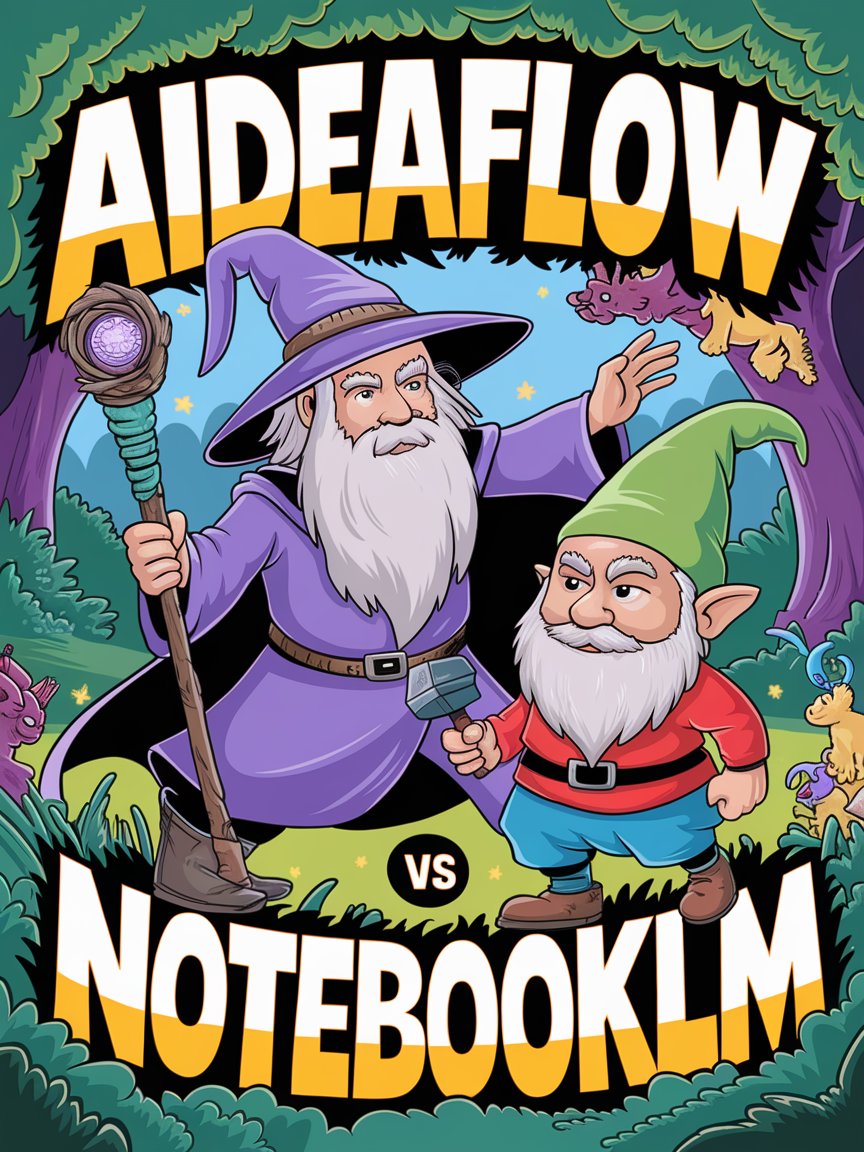
Unlock Unique Voices: AIdeaFlow vs. NotebookLM in Customization
The era of artificial intelligence has transformed content creation, allowing creators to explore unprecedented levels of customization and personalization. Among the tools leading this charge are AIdeaFlow and NotebookLM, both vying for attention in the realm of voice customization. While NotebookLM offers a solid foundation for generating content, AIdeaFlow stands out with its superior capabilities for creating unique, engaging audio experiences. In this blog post, we’ll dive deep into the features, advantages, and limitations of both platforms, highlighting why AIdeaFlow is the ultimate choice for those seeking to unlock unique voices in their audio content.
What is AIdeaFlow?
AIdeaFlow is an innovative platform designed for creators looking to produce AI-powered podcasts and audio content. It provides tools that enable users to craft personalized audio experiences that resonate with their audience.
Key Features of AIdeaFlow
- Voice Customization: Users can choose from a variety of voice styles and accents to align with their brand.
- Content Creation Tools: Integrated features help streamline the scriptwriting and editing process.
- User-Friendly Interface: Designed for both seasoned creators and newcomers, making it accessible for all.
What is NotebookLM?
NotebookLM is a content generation tool that utilizes AI to assist users in creating written and audio material. Its primary focus is on enhancing productivity through text generation.
Key Features of NotebookLM
- Text Generation: Offers robust capabilities for producing written content quickly.
- Basic Audio Features: Provides limited audio capabilities by converting text to speech.
- Integration with Other Tools: Works well with various productivity applications for seamless workflow.
Voice Customization: A Closer Look
AIdeaFlow's Advanced Customization
- Diverse Voice Options: Users can select from multiple voice types, including different genders, ages, and accents.
- Emotion and Tone Control: Allows creators to adjust the emotional tone of the voice, enhancing listener engagement.
- Personalization: Tailors voice characteristics to reflect the creator's brand identity, adding a unique flavor to the content.
NotebookLM's Limited Customization
- Standard Voices: Offers a limited selection of voices that may not fit all brand styles.
- No Tone Adjustment: Lacks features for emotional or tonal adjustments in voice output.
- Less Personalization: Difficulty in aligning audio output with specific branding needs.
Use Cases for AIdeaFlow
AIdeaFlow excels in various scenarios, making it a versatile choice for creators:
Podcasting
- Engaging Narration: Captivating voice options keep listeners engaged.
- Brand Alignment: Customizable voices help maintain brand consistency.
Audiobooks
- Character Voices: Ability to create distinct voices for different characters.
- Dynamic Reading: Emotionally rich narrations enhance storytelling.
Marketing Content
- Promotional Material: Unique voices can make ads more memorable.
- Brand Voice Consistency: Maintains a consistent audio presence across campaigns.
Use Cases for NotebookLM
While NotebookLM has its limitations, it can still be beneficial in specific areas:
Quick Content Generation
- Rapid Drafting: Ideal for generating quick written drafts before refinement.
- Basic Audio Outputs: Can convert text to audio for simple tasks.
Educational Content
- Lecture Notes: Useful for creating audio versions of lecture notes.
- Supplementary Materials: Provides basic audio support for educational resources.
User Experience: AIdeaFlow vs. NotebookLM
AIdeaFlow's Intuitive Design
- Ease of Use: Simple navigation and user-friendly design facilitate content creation.
- Responsive Support: Provides excellent customer support and resources for users.
NotebookLM's Functional Yet Limited Interface
- Basic Functionality: While functional, the interface may feel dated for some users.
- Limited Support: Fewer resources available for troubleshooting and user guidance.
Pricing Comparison
AIdeaFlow Pricing Model
- Flexible Plans: Offers various subscription plans catering to different needs.
- Value for Money: Includes comprehensive features that justify the cost.
NotebookLM Pricing Model
- Free Tier Available: Offers a limited version for basic use.
- Paywall for Advanced Features: Users may need to pay for essential upgrades.
Integration Capabilities
AIdeaFlow's Robust Integrations
- Seamless Workflow: Integrates with popular audio editing and production software.
- Cross-Platform Compatibility: Works well across devices and platforms.
NotebookLM's Basic Integrations
- Limited Options: Fewer integrations with third-party tools.
- Focus on Text: Primarily designed for text generation, limiting its audio capabilities.
Future Developments: What to Expect
AIdeaFlow's Roadmap
- Enhanced Voice Options: Plans to introduce AI-generated voices that adapt to user input.
- Advanced Editing Tools: Future updates may include more sophisticated audio editing features.
NotebookLM's Focus
- Text-Based Improvements: Likely to continue enhancing text generation capabilities.
- Audio Features: Uncertain future development in voice customization and audio quality.
Conclusion
When it comes to unlocking unique voices in AI-powered content creation, AIdeaFlow emerges as the superior choice compared to NotebookLM. Its extensive voice customization options, user-friendly interface, and robust integration capabilities make it a comprehensive platform for podcasters, marketers, and creators alike. While NotebookLM can serve specific needs, its limitations in voice personalization and engagement make it less suitable for those who prioritize unique audio experiences. For creators seeking to elevate their audio content, AIdeaFlow is undoubtedly the way to go.
By choosing the right platform, you can transform your content into an engaging auditory experience that resonates with your audience and stands out in a crowded marketplace.